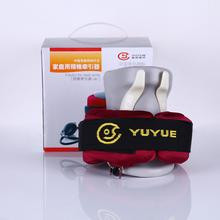去年最火的醫(yī)療劇,,莫過于《急診科醫(yī)生》,,有關(guān)急診科醫(yī)生的工作與生活日常受到了大眾的關(guān)注,。
旅美的中國(guó)醫(yī)生宋瑞醫(yī)生將和美國(guó)哈佛大學(xué)醫(yī)學(xué)院附屬布列根和婦女醫(yī)院急診科美國(guó)華裔醫(yī)生侯全益醫(yī)生一起,,在「中美醫(yī)生話急診」欄目中與你用地道的專業(yè)英語(yǔ),,聊聊美國(guó)急診制度,。

中美醫(yī)生介紹
美國(guó)醫(yī)生:侯全益醫(yī)生,哈佛醫(yī)學(xué)院急診科講師, 布列根和婦女醫(yī)院急診科醫(yī)生,,外科 ICU 重癥監(jiān)護(hù)專家,。
U.S. doctor: Dr. Peter Hou is an Instructor in Emergency Medicine at Harvard Medical School, an Emergency Physician at Brigham and Women’s Hospital, and a critical care specialist in the Surgical ICU.
中國(guó)醫(yī)生:宋瑞醫(yī)生,曾在中國(guó)和新加坡?lián)蝺?nèi)科住院醫(yī)師,,現(xiàn)為自由作家,,同時(shí)在波士頓進(jìn)行自閉癥相關(guān)臨床研究。
Chinese doctor: Dr. Rui Song, former resident physician of internal medicine in China and Singapore, ?freelancer ?and she is doing clinical research on Autism in Boston.
第一期
Episode 1
急診科醫(yī)生是「全能手」嗎,?
Are Emergency physicians「 omnipotent」?
以下為錄音中英文字版本:
Dr. 宋:侯醫(yī)生您好,,請(qǐng)問您看過美劇《急診室的故事》、《豪斯醫(yī)生》或《實(shí)習(xí)醫(yī)生格蕾》嗎,?
Hi Dr. Hou,?have you seen the TV series of ER, House, or Grey’s anatomy in America?
Dr. 侯:當(dāng)然,。
Of course.
Dr. 宋:我還知道有一部在美國(guó)波士頓拍攝的電視紀(jì)錄片名叫《波士頓醫(yī)務(wù)組》。
I also know that there was a TV documentary called Boston Med that was filmed in Boston.
Dr. 侯:是的,,我想那是在 2010 年播出的,。有趣的是,在 2000 年至 2001 年,,我在南加州進(jìn)行急診科住院醫(yī)培訓(xùn)的時(shí)候,,也出現(xiàn)在了一部叫做《創(chuàng)傷:急診室里看人生》的電視紀(jì)錄片里。
Yes, I think it was in 2010.? And interestingly during my emergency residency training back in 2000 to 2001, I was in another TV documentary called Trauma: Life in the ER, which came to film in South Los Angeles.
Dr. 宋:哇,,真的是太巧了!最近,,中國(guó)有一部非常受歡迎的醫(yī)療電視劇《急診科醫(yī)生》剛剛結(jié)束播映,。大眾覺得急診科醫(yī)生是「全能手」,因?yàn)樗麄兛偰軓乃劳鼍€搶救回患者的生命,。他們是從電視劇中得到了這樣的感受,。那么您怎么看待這個(gè)觀點(diǎn)呢?
Wow, what a coincidence!? Recently in China, there was a very popular TV drama called Emergency Physician that just finished broadcasting. ?People think emergency physicians are「omnipotent」because they often bring a patient back to life from death. They got the feeling from the TV series. ?What do you think about this opinion?
Dr. 侯:所有我認(rèn)識(shí)的急診科醫(yī)生可能都會(huì)說(shuō)急診科醫(yī)生并不是全能的,。我們知道我們有自己的局限性,,因?yàn)槲覀児ぷ鞯沫h(huán)境非常繁忙并充滿了不確定性。
All emergency physicians that I know will mostly likely say that they are not omnipotent.
We have and know our limitations since we work in busy environment with many uncertainties.
Dr. 宋:那么急診科醫(yī)生值班時(shí)都做些什么呢,?
So what does emergency physicians do during their shift?
Dr. 侯:我們被培訓(xùn)去診治生命或肢體已受到威脅或即將受到威脅的醫(yī)療情況,。
我們?cè)谥蛋鄷r(shí)會(huì)同時(shí)照顧很多患者。他們中有非急癥如感冒,、腳踝扭傷等,,也有需要與時(shí)間賽跑的急癥如心臟病發(fā)作、中風(fēng),、外傷,、敗血癥等,。
我們的輪崗一般是 9 小時(shí)制,其中有約 1 個(gè)小時(shí)用來(lái)將患者的情況交班給接班的急診科醫(yī)生,。
We are trained to take care of life or limb threatening, impending life or limb threatening conditions, and their expected course. ?
In terms of what we do actually during a shift, we take care of patients, many patients simultaneously varying from less acute conditions such as common cold or ankle sprain to acute more time sensitive conditions such as heart attack, stroke, trauma, or sepsis. ?
Most of our shifts are around 9 hours, which allows some 1 hour for handoff or pass-off of patients to the next emergency physician’s shift.?
Dr. 宋:好的了解,。那么您通常在急診科都會(huì)遇見怎樣的患者呢?
I see. So what kind of patients do you usually see in ED?
Dr. 侯:在我們醫(yī)院的急診科,,我們會(huì)接診自行前來(lái)就診的患者和救護(hù)車送來(lái)的患者,。他們可能是由他們的家庭醫(yī)生轉(zhuǎn)診來(lái)急診科進(jìn)行進(jìn)一步的檢查和評(píng)估。通常情況下,,我們?yōu)榛颊咚龅木褪桥懦膊?,確保他們沒有任何緊急情況需要及時(shí)診斷和治療。
就美國(guó)整體人口統(tǒng)計(jì)而言,,急診科患者的住院率約為 10-15%,。然而,在我們醫(yī)院,,由于這是一家學(xué)術(shù)和轉(zhuǎn)診醫(yī)院,,我們急診科患者的住院率高達(dá) 30-35%。因此,,醫(yī)院患者有較高的危急程度,,與社區(qū)醫(yī)院急診室有明顯不同。
我認(rèn)為這很大程度上歸因于我們與丹娜法伯癌癥研究所的緊密聯(lián)系以及其中大量的癌癥人群,。腫瘤患者往往免疫力低下,,并有許多復(fù)雜的醫(yī)療狀況,往往需要緊急診斷,、穩(wěn)定病情,,并收入醫(yī)院病房或重癥監(jiān)護(hù)病房。
同時(shí)我們也有一大群心血管病患者,,他們也進(jìn)一步提升了我們急診科患者人群的危急程度,。
In our hospital ED, we have patients who are called walk-in’s or others get transported by ambulance.? They may be referred by their doctors to the ED for further testing and evaluation. Often, what we do for our patients are called rule-outs to make sure they don’t have any emergent conditions which need to be diagnosed and treated in a timely manner.?
Just as background in terms of the overall demographics in the US, the hospital admission rate of ED patients is about 10-15%. However, in our hospital, which is an academic and referral hospital, our admission rate of ED patients is more like 30-35%. Hence, our patient population here has a higher acuity and is definitely different from the community ED’s. ?
Much of this I think is attributed to our close affiliation with Dana Farber Cancer Institute and with its large cohort of cancer population of course.? The oncology patients often are immunocompromised and have a lot of complex medical conditions, which often require emergent diagnosis, stabilization, and admission to the hospital ward or ICU. We also have a large cohort of cardiovascular patients which further contributes to the higher acuity of our ED cohort.
Dr. 宋:非常感謝您的分享。下期節(jié)目,,我想請(qǐng)您談?wù)勀诘募痹\科醫(yī)療團(tuán)隊(duì)是怎樣的好嗎,?
Thank you for sharing this and for the next time, could you describe your medical team in the ED?
Dr. 侯:沒問題!
Absolutely!
下一期講什么,?
What shall we talk about next?
急診科醫(yī)療團(tuán)隊(duì)組成-醫(yī)護(hù)以外的健康守護(hù)者,。
The medical team in E.D.-h(huán)ealthcare providers?in addition to doctors and nurses.
歡迎留言來(lái)說(shuō)說(shuō)「你所知的中國(guó)急診科工作是一種什么樣狀態(tài)?急診醫(yī)療團(tuán)隊(duì)由哪些人組成,?」
當(dāng)然,,如果你是醫(yī)學(xué)英文愛好者,歡迎關(guān)注丁香智匯回復(fù)「加群」,加入醫(yī)學(xué)英文愛好者群中~
掃描下方二維碼關(guān)注「丁香智匯」,,閱讀更多精彩文章,!








